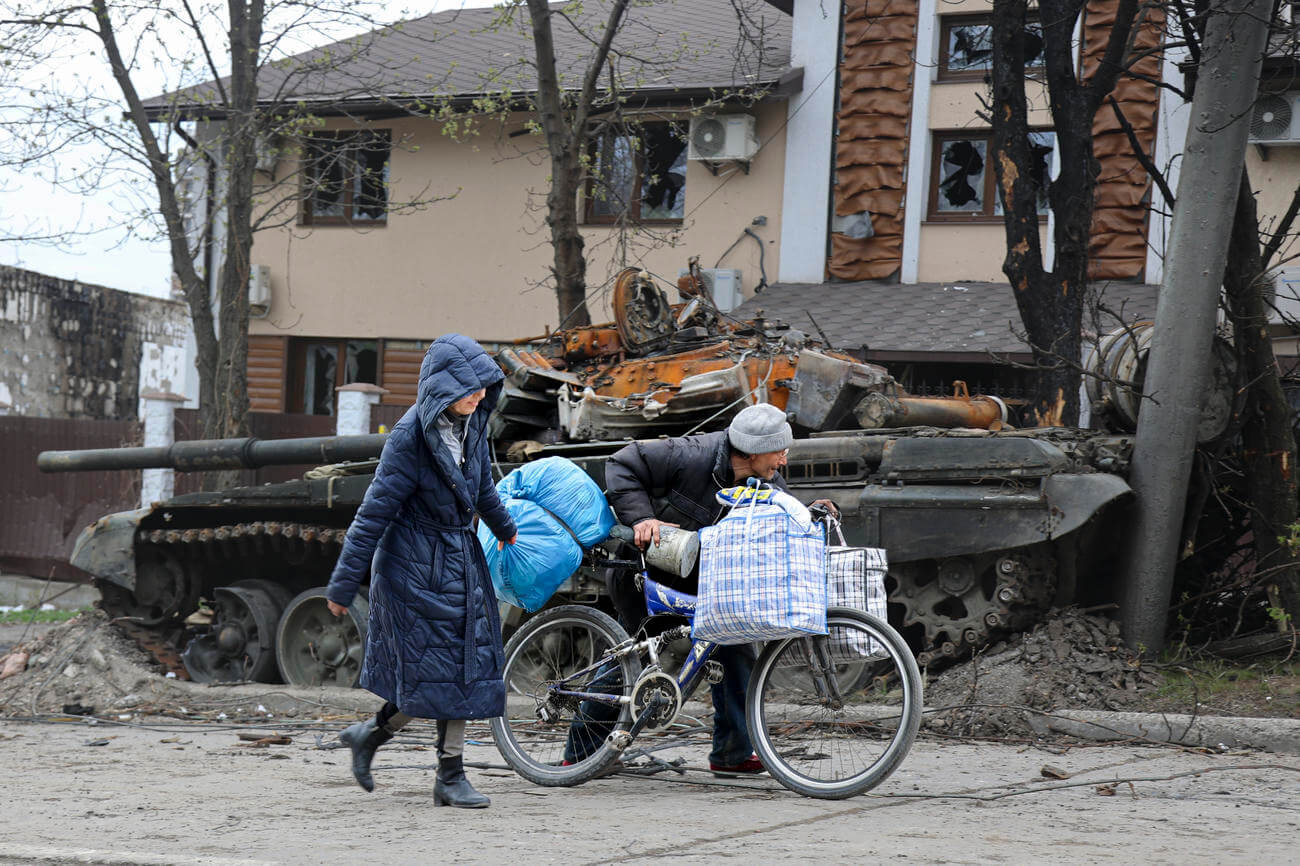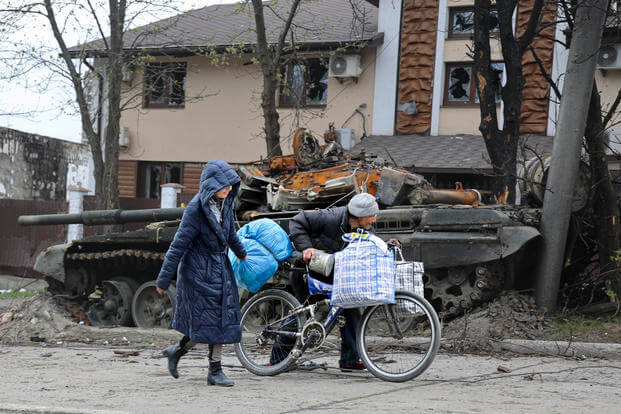

In the early days of the latest Russian invasion of Ukraine, a grandmother living on the outskirts of Kyiv noticed a large invading convoy in front of her house. She called authorities, who passed along the report to the Ukrainian military.
A Bayraktar TB2 drone swung into action and destroyed the vehicles, many carrying ammunition and fuel.
“Grandma wasn’t an obstacle,” said John Spencer, chair of urban warfare studies at West Point‘s Modern War Institute. “She was a force multiplier that achieved arguably a strategic, and if not, an absolutely operational strike.”
Read Next: Biden: Killing of al-Qaida Leader al-Zawahiri Is Long-Sought ‘Justice’
Spencer, speaking at a July conference on urban warfare held at Joint Forces Training Base Los Alamitos, California, points to the Ukrainian grandmother as an example of why fighting in cities is an equalizer in modern warfare. With almost everyone carrying camera phones capable of transmitting intelligence, it will be nearly impossible for U.S. service members to operate without being seen. Soldiers must learn how to protect civilians and work with militias rather than seeing them as a hindrance to their mission.
U.S. military trainers are squirreling away lessons learned from watching the Ukrainian armed forces defend cities from a much larger invading force. The Ukraine conflict has reinforced the prediction that urban combat will be the centerpiece of modern wars.
Brig. Gen. Robert Wooldridge, deputy commander of the Army‘s 40th Infantry Division and one of the primary forces behind its Urban Warfare Center, is hopeful junior officers and senior enlisted troops will become used to carrying and operating small drones. These relatively inexpensive eyes in the sky have exacted a heavy toll on Russians as spotters for long-range artillery.
“Their psychological impact far outweighs the number of casualties,” Wooldridge said speaking at the same event as Spencer. “We’d be fools to not learn from what is happening.”
It’s also clear to many service members that the information war on social media platforms may be just as important as the gunfights. Drone video of jerry-rigged grenades dropped onto infantry have instilled fear in the Russians and rallied Ukrainians to take up weapons. Public affairs units can also galvanize public support and encourage allied nations to join the fight.
“This war is being fought on TikTok,” Wooldridge said.
The Ukrainian armed forces displayed their adeptness at harassing social media to broadcast daily reports on the numbers of enemy soldiers and weapons destroyed.
“Ukraine has taught Russia, who used to be the masters at this, a master class in information warfare,” Spencer said.
Before battlefield commanders consider severing internet access to an urban population, they need to first consider how families will get access to information they need to stay safe, Wooldridge said.
“There’s a difference between can we do it and should we or will [we] be allowed to do it,” he said.
About 75% of the content of the 40th Infantry Division’s Urban Warfare Planner Course, originally created in 2021, has been updated since last October based on lessons learned from Ukraine.
Urban environments are electronically noisy, which can make securing communications channels more challenging for soldiers, Luke Shabro, a career intelligence officer and deputy director of the Army Mad Scientist Initiative, said in an interview.
“It becomes extremely difficult to hide or have any kind of concealment where any person can be a spotter for your position,” Shabro said.
One of the biggest challenges facing the Army is how soldiers can generate enough power for their vehicles and the drones that surveil and protect troops when spread out in the field, Shabro added.
“I think the Army’s recognizing the problem. It’s just a matter of how you get there,” he said.
The military is training on using directed energy weapons to shoot down drones but now has to solve automating that process to keep up with swarming enemies, Shabro said.
Recruits can also expect to do more training underground. The months-long standoff in the Azovstal steel plant in Mariupol has shown military leaders the value of planning for subterranean warfare in a protracted fight.
The military is heavily reliant on maps and satellite imagery to coordinate battle plans even though fighting in cities will take place underground, at street level and in high-rise buildings, where that kind of intelligence will be harder to come by, Spencer said.
Since last year, there’s been a shift at the National Training Center to transform the pristine town called Razish into one that resembles a war zone with rubble and pancaked vehicles. In a 16-day rotation at the NTC, a Stryker armored vehicle brigade combat team will typically spend a single day maneuvering through the town during a 16-day rotation. Wooldridge is optimistic this urban training time will increase.
“I hope that’s the recognition among the commanders. The normal shtick is to attack the town and move on. Now they want to defend it,” he said.
Related: Ukraine Seeks to Retake the South, Tying Down Russian Forces
© Copyright 2022 Military.com. All rights reserved. This material may not be published, broadcast, rewritten or redistributed.
